Uganda Birding Circuits – Where to go Birding in Uganda
Birding circuits in Uganda are tailored itineraries that explore a diversity of unique continental biomes/habitats that converge here known to host a variety of bird species unique to them. These unique continental habitats are protected as Ramsar sites and Important Bird Areas (IBA’s) due to their biodiversity importance and collectively host over 1080 species making Uganda a top birding destination. Uganda’s birding circuits can be combined to create an all-round Classic Uganda birding tour or explored on short but specialised itineraries to target local habitat-restricted species. Excellent infrastructure and amenities make these birding circuits very easy and accessible to exploit.
Let’s explore deeper into what sets Uganda on top of its peers in the and why it’s should be on your next birding plan.
Reasons to go birding in Uganda
-
Blessed with great all-year-round Weather and Diverse Habitats
For first time visitors to the equatorial Africa, seasoned birdwatchers and enthusiasts, Uganda provides an incredible birding experience unmatched on the continent for its diverse habitats.
Uganda sits geographically along the equator line and at the heart of the continents’ biggest biomes characterized by extensive savanna grasslands, woodlands, numerous lakes and rivers and highland montane rain forests. These habitats attract a varied bird diversity including regional endemics, intra-African and Palearctic migrants that makes an exciting twitching experience.
In Uganda; “the East African savannah meets the west African tropical forests.”
Uganda’s top bird-rich biomes/habitats include;
- Afro tropical highland forests species -87sp
- Guinea-Congo Forest species- 144sp
- Lake Victoria basin-12sp
- Somali-Masai -32sp
- Sudan and Guinea savanna- 22sp
-
Great connectivity: Roads and Accommodations
Uganda is a small country, with a great road network linking all top birding making getting around quite easy. Most of the top birding habitats lie within protected parks and reserves well serviced with a great road network that get better each year and serviced by a wide chain of accommodation options. Within these parks, a network of tracks are maintained to allow access to local diverse habitats although 4WD is advised especially during the wet seasons. On all our Uganda birding trips, priority is given to those accommodations that offer birding opportunities and located as close to or within our targeted birding areas.
-
Personalised Tailored Uganda Birding Tour Plans
Uganda birding tour plans /itineraries are tailored to one’s expereince with the regions’ birds to offer a species-targeted itinerary and exciting tour. Such well curated and personalized birding itineraries will offer you a rewarding time as you explore specific habitats for local restricted specialists along other local species. From this, trip duration and comfort style will determine the final budget cost.
A typical Uganda birding tour will begin from Entebbe, the country’s getaway to the world or the capital Kampala and will follow a typical planned circuit of Uganda Birding Safari where along one will explore various birding hotspots for localized species unique to different biomes spread country wide.
These tailor-made tour plans are all led by our experienced local birding guides for a personalised service and enriching birding experience.
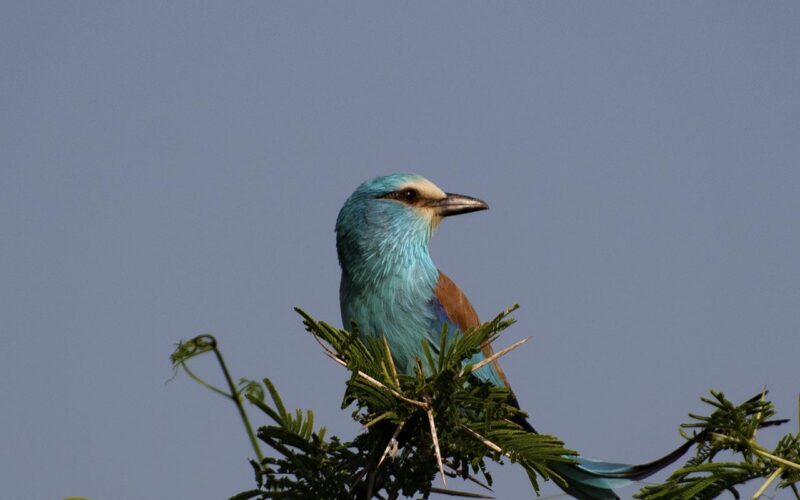
Exploring Uganda Birding Circuits
Let us explore in-depth these popular birding circuits, unique habitats and top bird highlights likely to be encountered while on our tailored birding tours here;
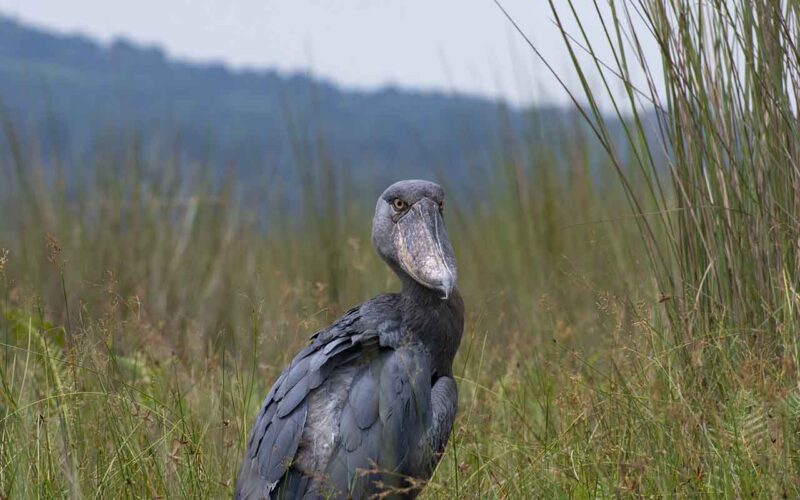
-
Central Uganda around Lake Victoria Birding Circuit
The sites on this short circuit lie within and close to the capital Kampala and Entebbe town, and usually undertaken as day trips out of Kampala. These trips target species unique to Lake Victoria biome basin that’s characterized by wetlands and floodplains, with top bird being a Shoebill while other species unique to Afro-tropical forests are encountered on several patches of these forests north and around Lake Victoria.
Key Birding Sites and Habitats: Wetlands, Agricultural patches and Moist tropical forest specialists
These sites include; Mabamba Wetland, Lutembe bay, Ziwa Rhino Sanctuary, Mabira Forest, Mpanga Forest and Entebbe Botanical Gardens
This majorly covers the flood plains around Lake Victoria and following the Nile flood plain in central all the way to north, it stretches to cover savanna and woodland of Murchison Falls and the cattle corridor in central Uganda. And includes the forests of Budongo with its Royal mile specialists like Chocolate-backed Kingfisher, Rufous-crowned Eremomela, Chestnut-capped Flycatcher, Yellow-footed flycatcher, White-bellied Kingfisher, Red-tailed Ant-thrush, White-thighed and Piping Hornbill, Nahan’s Francolin and more.
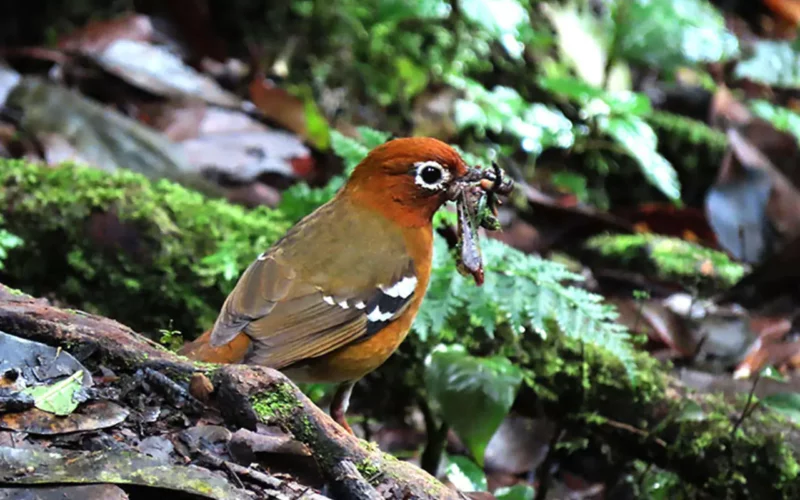
-
The Western Uganda Birding Circuit
This exciting Western Uganda birding circuit accommodate various habitats spreading over diverse altitude ranges along the western frontier characterized by montane highland forests on several mountain ranges, savanna woodlands on the rift valley floor, expansive wetlands and open water lakes and rivers, farmlands and transitional zones between these habitats. This birding circuit explores a unique selection of habitats including the wetlands west of Lake Victoria for excellent chances to tick off the prehistoric Shoebill that stalk these wetlands, woodlands, tropical rainforests up to the lower slopes of Rwenzori Mountain ranges near the equator line and then down into the bird-rich lowland forests of Semuliki, south of Lake Albert collecting along a rich diversity.
Species Highlights and Key Habitats on this Circuit
Key Specialists: Albertine Endemics, typical Afro-tropical Highland and Montane species, Savanna Woodland specialists and Wetland and Swamp characters.
A typical birding itinerary on this western Uganda birding circuit begins with a search for the prehistoric Shoebill that’s native to the marshes along the northern shores of Lake Victoria, then heading south through the rain-shadowed woodlands of Lake Mburo NP where acacia woodland specialists occur.
Birding on into the south-west, habitats include the heavily terraced towering highlands of Kigezi, agricultural farmlands, high-altitude swamp, montane misty rainforests of Bwindi and the volcanic slopes of Mgahinga. This entire region falls within the Albertine Rift Endemic Region, Africa’s most diverse endemic zone, with a wide avian, mammal and plant life, including the Mountain Gorilla, Chimpanzee and the Golden Monkey.
In the bird-rich high-altitude rainforests of Bwindi, Echuya and Mgahinga NP, the birding highlight is to tick off, 24 of 25 Albertine Endemics including, Green Broadbill, Rwenzori Turaco, Rwenzori Batis, Grauer’s Warbler, Grauer’s Swamp Warbler, Strange Weaver, Red-faced and Neumann’s Warbler, Willard’s Bush-shrike, Stripe-breasted Tit, Kivu Ground Thrush, Purple-throated Sunbird, yellow-eyed Black flycatcher, Dwarf Honeyguide and more noteworthy checklist of restricted range species unique to these rainforests.
From the rainforests of Bwindi, the circuit runs north into the rift valley floor, exploring through the rich savannas and woodlands of Queen Elizabeth NP, taking a boat cruise birding trip on the Kazinga channel that attracts several waders and other water associated characters. North of this great biosphere, we bird through the chimpanzee forests of Kibale NP where the prime target will be the forest floor specialist, Green-breasted Pitta along a great checklist of western forest specialists.
At the foothills of Rwenzori mountains and into the lowlands of Semliki forest, pace down and look out for a collection of the Guinea Congo biome specialists on their eastern range limit among the small African Piculet, the Black-casqued, Dwarf and Eastern Little Hornbills, Blue-headed Crested Flycatcher, Yellow-throated Nicator, Leaflove, Nahan’s Partridge, Red-chested Goshawk and Chestnut-flanked Sparrowhawk among others while the nearby reserve hosts grassland and woodland specialists.
Western Uganda Birding Circuit Extension Options
One highly-recommended western Uganda birding circuit extension is; the lowland forests of Semuliki, known for the rare West African and Congo restricted species on their eastern limit. Another option is including the expansive mid-altitude great forest Budongo known for a rich forest checklist. At Budongo Forest, the Royal Mile birding trail is a hotspot where we look out for the iron-wood canopy specialists that include, Chestnut-capped and Yellow-footed Flycatchers, Rufous-crowned Elemomera, Tit Hylia, Ituri Batis, Chocolate Backed and Blue-breasted Kingfisher, Puvel’s Illadopsis only known from here and other good birds of forests.
Key Birding Hotspots include; Bwindi Impenetrable Forest, Echuya Forest Reserve, Queen Elizabeth NP, Imaramgambo Forest, Rwenzori NP, Kibale Forest NP, Semuliki NP, Mgahinga NP and Budongo Forest.
Mountain Gorilla, Chimpanzee and Golden Monkey Tracking Options
The western Uganda birding circuit explores the rainforests in the Albertine rift area that hosts half of the remaining Mountain gorillas in the world. Birding expereince occurs along the same rainforest habitats that protects these man’s closest relative apes with chances to encounter them. A trek expereince to encounter these endangered apes in their natural rainforest homes is often dubbed a lifetime adventure and a humbling expereince.
On the slopes of Mgahinga National Park, Golden monkey occupy the bamboo slopes along the three volcanic mountain ranges. This charismatic Albertine rift near-endemic occurs in troops numbering up to 100 individuals and trekking to them lasts up to 4 hours.
Important to Note: The trek expereince along these incredible primates is an exclusive expereince undertaken independently and one requires a special trek permits. Uganda’s affordable trek permits to these incredible apes are high-demand, ought to be purchased well in advance for availability and accommodation planning.
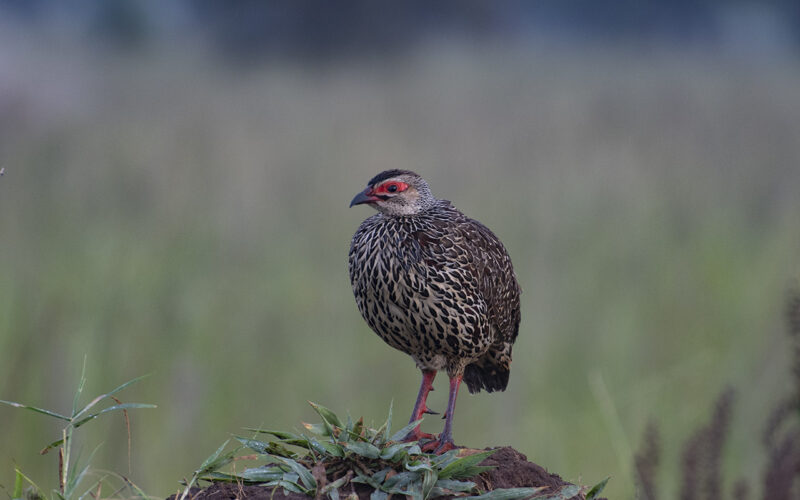
-
The Eastern Uganda Birding Circuit
Key Habitats and Species Highlights: Wetlands, Afro-tropical specialists, Dry-scrub and Savanna Woodland characters.
The eastern Uganda birding circuit is the most exciting route on our itineraries bring to our checklist Horn of Africa specialists on their western range limit. This cricut explores a plethora of habitats ranging from flood plains, expansive wetlands, dry scrub and thornbush and semi-arid savanna vegetation. Biome specialists include Lake Victoria restricted biome species, afro-tropical rainforest species on Mount Elgon slopes, to Somali-Masai biome species spread in the greater semi-arid area of Karamoja in the far north east.
Heading out east of Kampala, the first stop on this birding circuit is the tropical forest of Mabira, the biggest tropical forest in central Uganda for forest restricted species notably; White-spotted Flufftail, Green Hylia, Red-tailed Bristlebill, Red-tailed Greenbul, Forest Robin, Fire-crested Illadopsis, Forest Woodhoopoe (also known as Forest Scimitarbill). Onwards, the expansive rice fields of eastern Uganda and swamps host a quality list of waders.
Other bird hotspots include the tropical forests on lower slopes of Mount Elgon known for high-altitude specialists while the expansive flood plains of Lake Bisinia is a known breeding ground for a Uganda’s endemic, the Fox’s Weaver. Onwards the birding circuit explores the drybushland across this Karamoja hinterland where sites include Pian-Upe Wildlife Reserve, Mount Moroto, Matheniko/ Bokora Wildlife Reserve all the way into Kidepo Valley NP.
Bird Highlights: A quality selection of Somali-Masai biome restricted including Karamoja Apalis, Red-billed Hornbill, Rufous Chatterer, Bruce’s Pigeon, Chestnut Sparrow, Grey-capped Social Weaver, Magpie and Superb Starling, Spotted Thick Knee, Eastern Chanting-goshawk, Fox’s Kestrel, Common Ostrich, Secretary Bird, Buff-crested, White-bellied and Hartlaub’s Bastards, Northern White-crowned Shrike, Boran and Rock-loving Cisticolas, Little Rock-Thrush, charismatic Steel-blue and Straw-tailed Whydahs, African Silverbill, Cut-throat Finch and other dry country species unique to these habitats. Several of these species are on their western range limit and found no-where in the country.
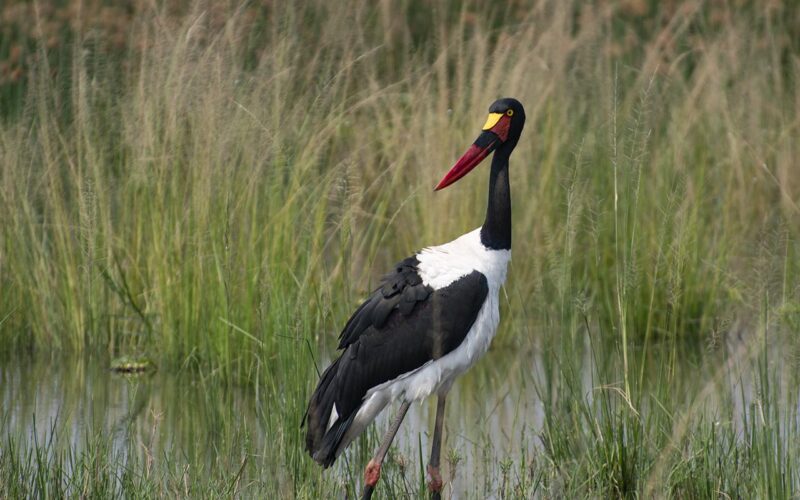
Eastern Uganda Birding Extension
The circuits further birds across the northern region, extending into Murchison Falls NP, for several Sahel and Sudan-Guinea species. The region is characterized by broad leafed and semi-deciduous woodland, Borassus palm dotted savanna interspersed with acacia woodlands and the shallow edged wetlands along the Nile delta that is hunted by Shoebill pairs and other waders.
Key Birding sites on this stretch include: Mabira Forest, Lake Bisinia and its floodplains, Mt. Elgon NP, Pian-Upe reserve, Mt. Moroto reserve, Matheniko/Bokola reserve, Kidepo Valley NP extending into Murchison Falls NP Bugungu wildlife reserve and Budongo Forest.
